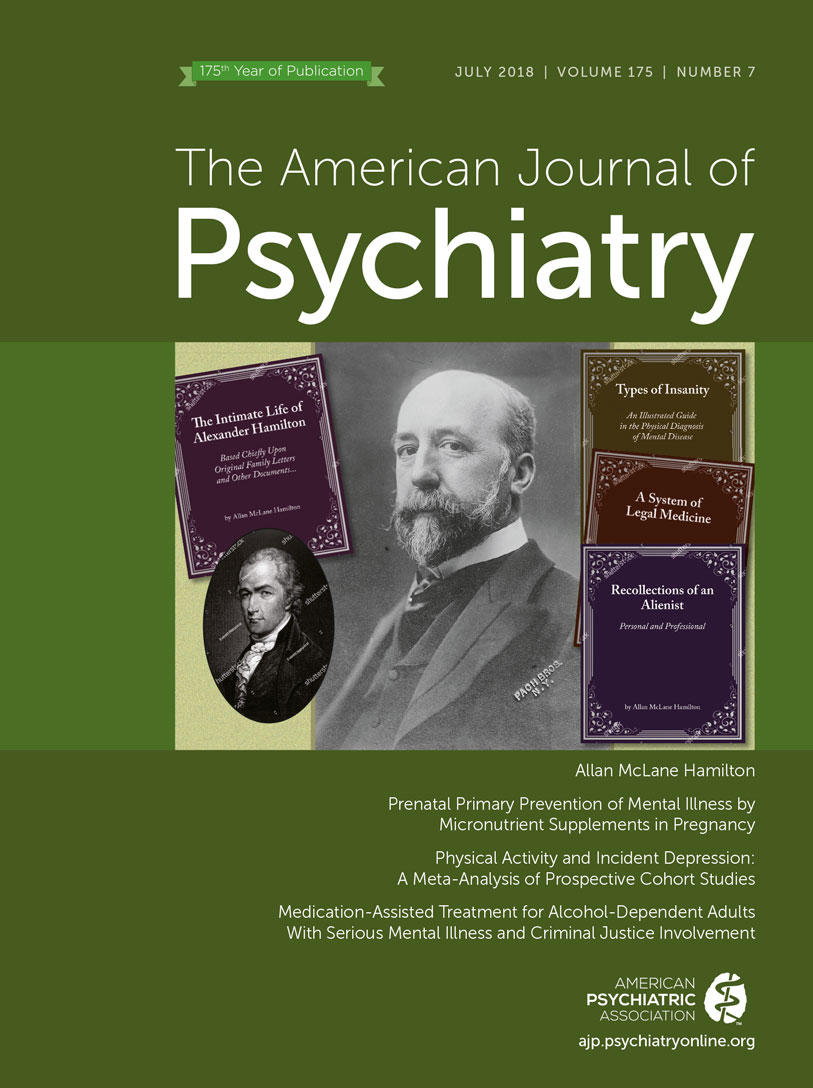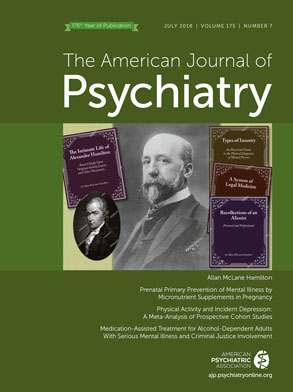Categorical personality disorders as described in DSM-5 Section II are fraught with problems, including excessive co-occurrence, heterogeneity within categories, arbitrary diagnostic thresholds, diagnostic instability over time, poor coverage of personality pathology, and criteria sets that are inconsistent amalgams of signs, symptoms, behaviors, traits, and even functional outcomes. Only antisocial personality disorder is defined predominantly (i.e., six of seven A criteria) in personality trait terms. Originally, the DSM-5 Personality and Personality Disorder Work Group set out to redefine all personality disorders in terms of pathological personality traits (
1,
2). The Work Group developed a model that was consistent with the widely validated and well-established five-factor model of personality but was focused on the “pathological poles” of five-factor model traits in order to capture the personality dispositions of people with personality disorders. The model was refined iteratively via community samples of treatment-seeking participants and an assessment instrument, the Personality Inventory for DSM-5 (PID-5), was developed (
3). The Work Group’s trait model appears as part of an “alternative” hybrid dimensional-categorical model for personality disorders in DSM-5 Section III, “Emerging Measures and Models.” The proposed personality disorder model for ICD-11 uses personality traits exclusively, rather than categories, to describe the myriad variations in “styles” of personality pathology (
4).
Whether personality disorders are best cast in trait terms has been controversial. These questions are highly relevant today as the personality and personality disorder fields come together to try to integrate pathological personality and normative personality into a single comprehensive and coherent model (
5,
6). Considerable evidence has accumulated that personality disorders can be described by the five-factor model of personality (
7), but whether “normative” personality traits are sufficient or pathological traits are necessary is an open question.
In a study reported in this issue, Czajkowski and colleagues (
8) set out to determine the phenotypic and genetic relationships of DSM-IV/DSM-5 personality disorders and normative personality traits using data from the population-based Norwegian Institute of Public Health Twin Panel. Normative personality traits and DSM personality disorders are heritable at similar rates (i.e., between 40% and 60%) and may share genetic influences. Few genetic studies have incorporated both disorder and trait models in the same twin assessments. The personality trait model studied by Czajkowski and colleagues is the so-called Big Five, a version of the five-factor model of personality. The five broad trait domains of the five-factor model are neuroticism, extraversion, agreeableness, conscientiousness, and openness. They are referred to as “normative,” as opposed to “normal,” because at least neuroticism, defined as a tendency to be depressed, anxious, and stress-reactive, is pathological and, while all of the traits are normally distributed in populations, extremes of the other four traits can be either adaptive or pathological. Agreeableness is an orientation toward empathy and getting along with other people; extraversion is a disposition to be outgoing, friendly, and emotionally positive; conscientiousness is a tendency to be orderly and achievement oriented; and openness is a tendency to be curious and imaginative and to try new things.
In general, personality disorders are characterized by high neuroticism, low agreeableness, and low conscientiousness. Openness is the only five-factor model trait that has not been shown to describe personality disorders. In the Czajkowski et al. study, these phenotypic correlations were supported, along with low extraversion. Neuroticism had the highest positive correlations with personality disorders, and agreeableness, conscientiousness, and extraversion had the strongest negative correlations, meaning that low scores were associated with personality pathology. Genetic correlations between the traits and the disorders were moderate but also supported the general trait structure of high neuroticism and low agreeableness and conscientiousness for personality pathology. The study also found, however, significant genetic variance that was not shared between Big Five trait domains and personality disorders. Thus, from a genetic perspective, investigators should not conclude that DSM personality pathology is represented adequately by Big Five traits.
Table 1 lists the five trait domains of the Alternative DSM-5 Model for Personality Disorders (AMPD) and their definitions. Negative affectivity corresponds to neuroticism in the five-factor model. Detachment is low extraversion, antagonism is low agreeableness, and disinhibition is low conscientiousness. Instead of a domain corresponding to openness, the AMPD includes the domain of psychoticism to help capture the trait structure of schizotypal personality disorder. Within the five broad domains are three to eight more specific trait facets. For example, emotional lability is a trait facet within the negative affectivity domain. Impulsivity is a facet within the disinhibition domain. Thus, the AMPD uses pathological traits rather than the normative traits that the five-factor model uses for descriptions of personalities.
Trait domains and facets were assigned to the trait DSM-5 B criteria for six specific personality disorders in the AMPD on the basis of existing meta-analyses, with corroboration from data provided by clinicians (
9). Diagnostic algorithms for the trait criteria were also developed from the Morey survey (
10). The algorithms were developed to simultaneously maximize correspondence with DSM-IV personality disorder diagnoses (to be minimally disruptive to clinical practice and research), to minimize overlap with other personality disorder diagnoses (to reduce comorbidity), and to maximize relationships with functional impairment (to increase validity). The algorithms were successful in rendering DSM-IV personality disorder diagnoses according to personality functioning impairments and pathological personality traits with very good fidelity (mean correlations between DSM-IV and AMPD dimensional criterion counts, 0.718).
In another study from the Norwegian Twin Panel, AMPD personality traits were measured using a short version of the PID-5 questionnaire (
11). PID-5 traits were found to tap the same genetic risk factors as DSM-5 Section II personality disorders, suggesting that personality disorders are better represented by pathological personality traits, as in the AMPD, than by normative traits. Because individual personality disorders have relatively low prevalence in nonpatient samples, Norwegian twin studies use dimensional representations of personality disorders that include subthreshold manifestations to increase power in their analyses. These investigators have found that scores below and above the clinical threshold, both for individual criteria and their counts, represent different levels of severity on the same liability dimension and consequently that identical genetic and environmental influences are responsible for variability in scores above and below thresholds. This is in keeping with the dimensional aspects of the AMPD and further belies categorical representations of personality pathology.
Finally, researchers (e.g., reference
12) have also suggested that personality disorder traits might be embedded in an integrative hierarchy, with broad spectra of psychopathology (see
Table 1) situated at the top of the hierarchy, followed by dimensions of personality, specific trait constructs, and personality disorders described at lower levels—providing important bridges between personality pathology and syndromal disorders. Appreciation of the relationship of pathological personality trait domains to the meta-structure of psychopathology in general makes ubiquitous mental disorder comorbidity understandable. Because symptom disorders and personality disorders share underlying predispositions, certain patterns of co-occurrence can be expected to be observed more often than others. To represent psychopathology as separate co-occurring disorders when in fact some more fundamental process is operative, however, obscures the search for etiology and pathophysiology and complicates treatment selection (
13).
Since the same personality trait domains underlie both symptom disorders (e.g., depressive, anxiety, disruptive behavior, and psychotic disorders) and personality disorders, core aspects of personality pathology that distinguish personality disorders from other types of pathology, as well as from nonpathological personality “styles,” need to be identified. The DSM-5 A criterion for specific personality disorders (and a “moderate” rating on the AMPD’s Level of Personality Functioning Scale) according to the Alternative Model of “characteristic difficulties in any two of four areas” (identity, self-direction, empathy, or intimacy) has been found to differentiate personality disorders from other types of psychopathology with the greatest combined sensitivity and specificity (
10,
14).
In conclusion, personality disorders can be redefined in terms of personality traits, but from the perspective of the Norwegian Twin Study, pathological personality traits are more genetically related to personality disorder criteria than are normative traits. Because traits not only define personality pathology but also frame the meta-structure of psychopathology in general, core impairments specific to personality pathology are necessary for a comprehensive model.

